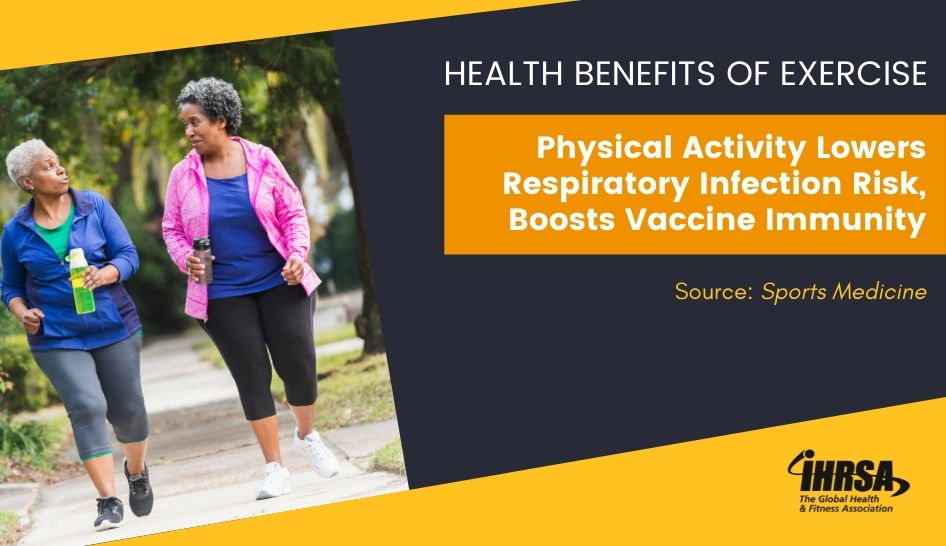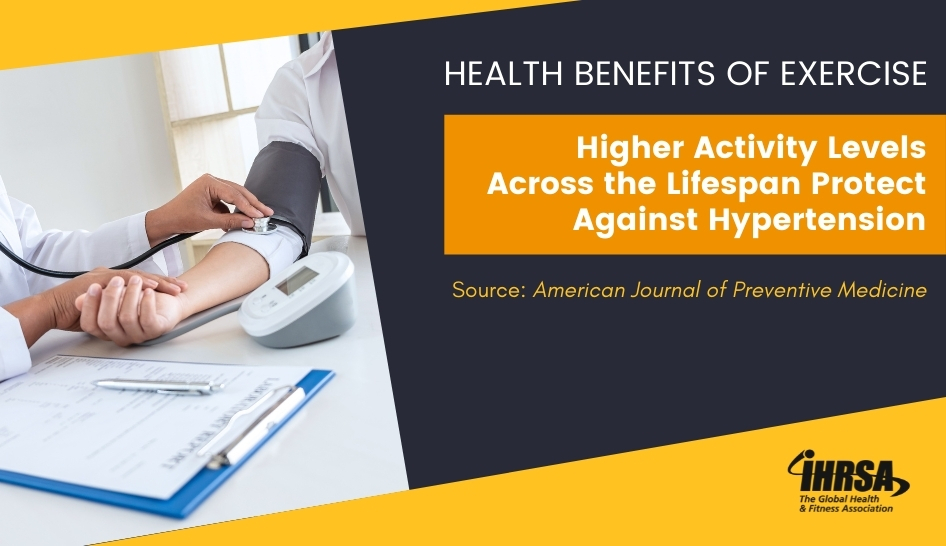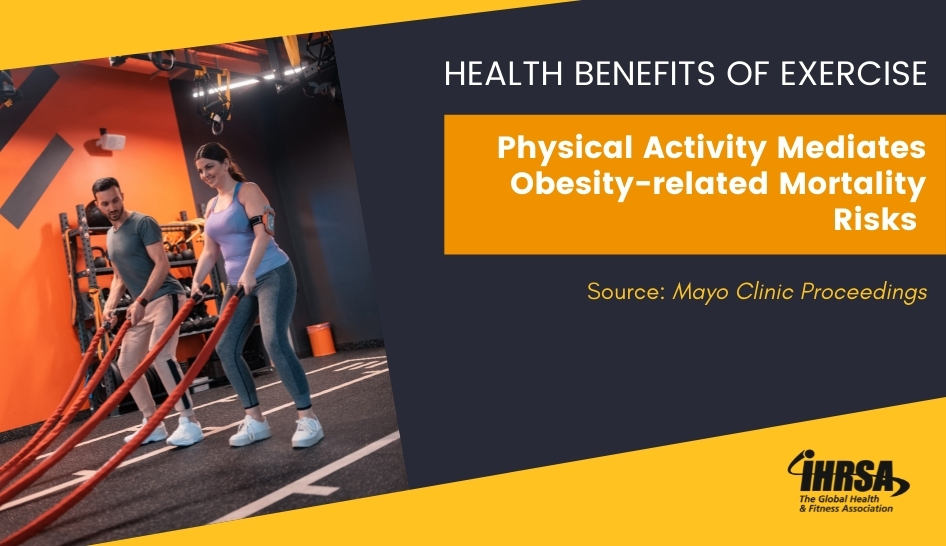The Health Benefits of Exercise Report is an article series in which we select three peer-reviewed articles, summarize the key findings, and provide social media images for you to share with your community. You can read previous articles here.
Physical Activity Linked to Better Immune Health
We review three studies that find associations between physical activity and lower risk of infection and hypertension, and how exercise mediates obesity-related mortality risks.
The COVID-19 pandemic may show signs of improvement in some areas, but maintaining a physically active lifestyle continues to present a challenge. We know that exercise is a key measure to maintaining good physical and mental health and well-being. This month’s edition of the Health Benefits of Exercise Report covers:
A systematic review finding an association between physical activity and lower risk of infection and infection mortality,
A study finding high physical activity levels at young adulthood and throughout the lifespan are protective against hypertension, and
A study showing that physical activity mediates obesity-related mortality risks.

Physical Activity Lowers Respiratory Infection Risk, Boosts Vaccine Immunity
Physical activity has a key role in the prevention and management of non-communicable diseases, and some evidence suggests physical activity benefits immune health. Recent studies have shown a link between physical activity and lower odds of severe COVID-19 outcomes. A systematic review published in the journal Sports Medicine looked at the relationship between physical activity and various markers of immune system health, including immune system cells, antibody concentrations, and risk of infection, hospitalization, and mortality.
According to the findings, physical activity was associated with a 31% lower risk of a community-acquired infection and 37% lower risk of infectious disease death. Physical activity programs lead to increased levels of CD4 cells and immunoglobulin IgA. Additionally, concentrations of antibodies were higher following vaccination when combined with a physical activity program.
The authors conclude that “regular, moderate to vigorous physical activity is associated with reduced risk of community-acquired infectious diseases and infectious disease mortality, enhances the first line of defence of the immune system, and increases the potency of vaccination.”

Higher Activity Levels Across the Lifespan Protect Against Hypertension
Physical activity has been known to have cardioprotective effects. Hypertension—or high blood pressure over 130/80 mmHg—is a common risk factor for heart disease, and physical activity is an important non-medicinal strategy to prevent or manage high blood pressure. A study published in the American Journal of Preventive Medicine looked at the relationship between physical activity in young adulthood, as well as throughout the lifespan, and hypertension risk. In the study, researchers analyzed data on 5,115 people who were part of a long-term cohort study. Participants were asked about physical activity levels during the previous 12 months at each of 9 exams occurring over 30 years of follow-up.
According to the results, low physical activity level at age 18 was associated with a higher risk of developing hypertension, and lower activity levels through the next 30 years also increased risk. Meeting physical activity guidelines was not protective against hypertension, but getting double the recommended amount, or about 300 minutes of moderate-vigorous exercise each week, at age 18 and continuing high levels of activity for the subsequent 30 years did lower the risk of hypertension.
These findings suggest higher than recommended levels of activity may be needed to protect against hypertension over the longer term.

Physical Activity Mediates Obesity-related Mortality Risks
Obesity has been linked to elevated risk for mortality, though evidence suggests physical activity may help attenuate that risk. However, that evidence is limited by the use of body mass index (BMI) as a measure of obesity. A study published in Mayo Clinic Proceedings looked at data from a large, UK cohort study to assess the relationship between physical activity levels and mortality risk across a broad range of BMI, body fat percentage, and waist circumference categories. The study included data on 295,217 participants.
The results showed that high levels of activity were associated with lower mortality across all adiposity categories, except BMI over 35. The highest risk was observed in people with low activity levels and high body fat, compared to those at high activity levels and low body fat. Physical activity also attenuated the risk of mortality associated with higher body fat percentage and waist circumference.
These findings underline the importance of making physical activity and fitness more inclusive of people living with overweight and obesity. Clubs have a key role to play in supporting people of all abilities to be active.

Alexandra Black Larcom, MPH, RD, LDN, previously served as IHRSA's Senior Manager of Health Promotion & Health Policy—a position dedicated to creating resources and projects to help IHRSA members offer effective health programs, and promoting policies that advance the industry.